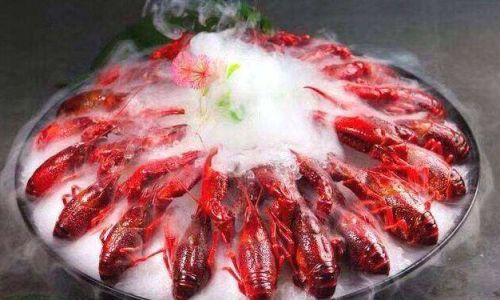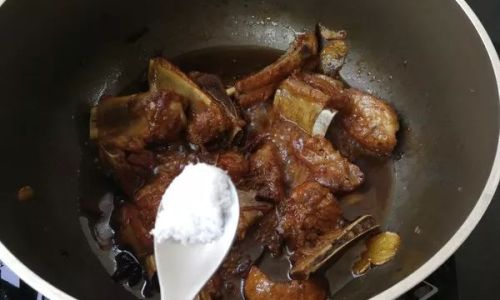Chilled crayfish, a beloved summer dish in many culinary traditions, offers a refreshing twist to the classic spicy or garlicky preparations. This dish, often served as an appetizer or a light main course, combines the natural sweetness of crayfish with a tangy, aromatic marinade. While the process may seem straightforward, achieving the perfect balance of flavor, texture, and presentation requires attention to detail. Below, we delve into the intricacies of preparing chilled crayfish, from selecting the freshest ingredients to mastering the cooking and marinating techniques that elevate this dish to gourmet status.
Selecting the Perfect Crayfish
The foundation of any exceptional chilled crayfish dish lies in the quality of the crustaceans themselves. Freshness is non-negotiable. When purchasing crayfish, look for specimens that are lively, with intact shells and vibrant colors. Avoid those with dull hues, cracked shells, or a fishy odor, as these are signs of spoilage.
Ideally, opt for medium-sized crayfish (approximately 3–5 inches in length), as they strike the best balance between meatiness and ease of cooking. Larger crayfish may become tough if overcooked, while smaller ones can dry out quickly. If possible, source your crayfish from reputable suppliers or local fisheries to ensure ethical and sustainable practices.
Cleaning and Preparing the Crayfish
Proper cleaning is critical to removing impurities and ensuring food safety. Begin by rinsing the crayfish under cold running water to eliminate debris. For a thorough clean, fill a large basin with cold water and add a generous handful of salt. Soak the crayfish for 15–20 minutes, stirring occasionally to dislodge dirt.

Next, scrub each crayfish vigorously with a stiff brush to remove algae or mud from the shell. Pay special attention to the claws, legs, and the area around the head. To humanely dispatch the crayfish, grasp the body firmly and twist the tail to separate it from the head. Alternatively, some chefs prefer to cook the crayfish whole before removing the intestinal tract, as this simplifies the process.
If cooking whole, use kitchen shears to trim the legs and antennae for a neater appearance. For those who prefer to remove the intestinal tract prior to cooking, insert a thin skewer or toothpick into the tail segment and gently pull out the dark vein. This step is optional but recommended for a cleaner final product.
Cooking Techniques: Boiling vs. Steaming
The cooking method significantly impacts the texture and flavor of chilled crayfish. Boiling is the most common approach, as it cooks the meat evenly and quickly. Fill a large pot with water, adding aromatics such as ginger slices, garlic cloves, bay leaves, and a splash of rice wine or white vinegar to neutralize any lingering fishiness. Bring the water to a rolling boil, then add the crayfish in batches to avoid overcrowding.
Cooking time varies based on size:

- Small crayfish (2–3 inches): 2–3 minutes
- Medium crayfish (3–5 inches): 4–5 minutes
- Large crayfish (5+ inches): 6–7 minutes
Overcooking will result in rubbery meat, so strictly adhere to these timings. To halt the cooking process and preserve the meat’s tenderness, immediately transfer the cooked crayfish to an ice bath. This “shocking” method also enhances the vibrant red hue of the shells.
Steaming is an alternative method that retains more of the crayfish’s natural juices. Place the crayfish in a steamer basket over boiling water, ensuring they are not submerged. Steam for the same durations as boiling, then chill as described above.
Crafting the Perfect Marinade
The marinade is the soul of chilled crayfish, infusing the meat with layers of flavor. A classic marinade combines soy sauce, rice vinegar, sugar, chili flakes, fresh cilantro, and lemon zest. For a more complex profile, experiment with additions like star anise, Sichuan peppercorns, or a splash of Shaoxing wine.
Base Recipe:

- 1 cup soy sauce
- ½ cup rice vinegar
- ¼ cup sugar
- 3 tbsp fresh lemon juice
- 2 tbsp chili oil or crushed red pepper
- 1 tbsp minced garlic
- 1 tbsp grated ginger
- 1 bunch cilantro, chopped
- 1 lemon, sliced (for garnish)
Whisk the ingredients until the sugar dissolves. Adjust the sweetness, acidity, and spiciness to taste. For a milder option, reduce the chili oil and add a splash of sesame oil.
Marinating Time:
Transfer the chilled crayfish to a large, non-reactive container (glass or stainless steel) and pour the marinade over them. Ensure the meat is fully submerged. Marinate in the refrigerator for at least 4 hours, though overnight yields the best results. Gently toss the crayfish every 2 hours to distribute the flavors evenly.
Presentation and Serving Suggestions
Chilled crayfish is as much a feast for the eyes as the palate. Arrange the crayfish on a platter lined with ice to maintain their chill. Garnish with lemon wedges, cilantro sprigs, and thinly sliced red chilies for a pop of color.
Serve with complementary dipping sauces, such as:

- Spicy Mayo: Mix mayonnaise with sriracha and a dash of lime juice.
- Ginger-Scallion Sauce: Combine minced ginger, scallions, soy sauce, and toasted sesame oil.
- Cocktail Sauce: Ketchup blended with horseradish and lemon juice.
Pair the dish with crisp white wines like Sauvignon Blanc or light beers such as lagers or wheat ales. For non-alcoholic options, iced green tea or lemonade with mint complements the flavors beautifully.
Health Benefits and Safety Considerations
Crayfish is a lean source of protein, rich in vitamins B12 and selenium. However, proper cooking is essential to eliminate parasites and bacteria. Always cook crayfish to an internal temperature of 145°F (63°C), and avoid consuming raw or undercooked shellfish.
Individuals with shellfish allergies should avoid this dish entirely. Additionally, those on low-sodium diets should adjust the marinade’s salt content by using reduced-sodium soy sauce or substituting with coconut aminos.
Common Mistakes to Avoid
- Overcooking: Results in tough, dry meat. Stick to recommended cooking times and use an ice bath.
- Inadequate Cleaning: Failing to scrub or soak crayfish can leave gritty residue.
- Weak Marinade: A bland marinade fails to penetrate the meat. Ensure ample acidity (vinegar/lemon) and sweetness to balance flavors.
- Skipping the Chill Time: Serving crayfish warm masks the marinade’s nuances. Refrigeration is non-negotiable.
- Using Stale Ingredients: Fresh herbs and spices are crucial for a vibrant marinade.
Regional Variations and Creative Twists
While the classic chilled crayfish recipe is timeless, regional adaptations offer exciting possibilities:

- Sichuan-Style: Add Sichuan peppercorns and doubanjiang (chili bean paste) to the marinade for a numbing, spicy kick.
- Thai-Inspired: Infuse the marinade with lemongrass, galangal, and fish sauce. Serve with a side of sticky rice.
- Mediterranean Twist: Substitute soy sauce with olive oil, lemon zest, oregano, and crushed garlic.
- Vegan Alternative: Marinate cooked king oyster mushrooms in the same mixture for a meat-free version.
Storing Leftovers
Leftover chilled crayfish should be stored in an airtight container in the refrigerator for up to 2 days. Avoid freezing, as this alters the texture. To reheat, gently warm in a low-temperature oven or enjoy cold with a fresh squeeze of lemon.
Conclusion
Chilled crayfish is a celebration of simplicity and sophistication, where minimal ingredients shine through meticulous technique. By prioritizing freshness, mastering cooking times, and balancing the marinade’s flavors, you can transform this humble crustacean into a dish worthy of any occasion. Whether hosting a summer barbecue or seeking a light yet satisfying meal, this recipe guarantees a culinary triumph. Experiment with regional twists or dietary adaptations to make it your own—the possibilities are as endless as the ocean itself.
So, the next time you crave a refreshing escape from the heat, remember: the secret to perfect chilled crayfish lies not just in the kitchen, but in the art of patience and precision. Bon appétit!





0 comments